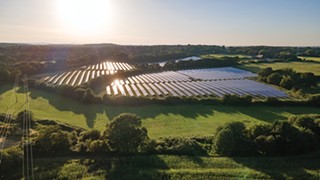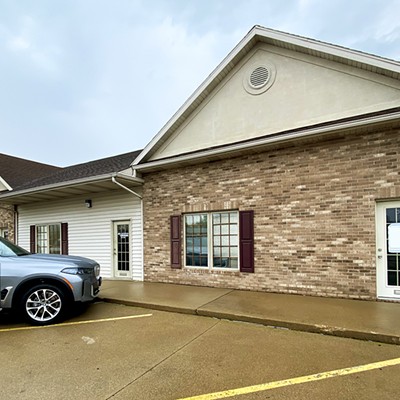In a study of electrical supply options for Springfield in the 1990s, a second gas turbine at the Dallman power station was the favored option. Although the fuel was expensive compared to coal, it was relatively inexpensive to build compared to a coal plant. However, another option presented was a solar farm, which showed it was more cost-effective than the cheaper gas plant over 20 years, at an installed cost of $5/watt. Ultimately the coal plant won, due to the promise of more construction jobs and more permanent jobs for operation and maintenance.
What was missed was that solar also generates jobs. Now we are faced with the aftermath of that decision. The City Council just voted to approve a study for the conversion of the Dalman 4 coal plant to natural gas, with plans to use it long enough to pay for itself by 2040.
Solar farms now cost under $1/watt and $3/watt with storage. You can build one as fast or as gradually as you need it. You can also avoid the feast and famine brought on when a large labor force is needed to build a conventional plant, then laid off when it's done. A solar farm can grow a labor force and retain it as more and more arrays are installed to match growth.
Renewables are "predictive resources," as all you need to do is watch the weather forecast to know if solar or wind power is going to be available. Then you can substitute them for your fossil fuel sources. The sun drives summer peak demand from air-conditioning loads, but it can also be the source to address that demand. Tracking solar arrays rotate throughout the day, tracking the sun as it moves across the sky, meeting its full availability. Wind can typically meet winter nighttime heating loads and be available to charge electric cars overnight.
There is much talk about new gas and converted coal plants being the go-to options for capacity. But what happens to our home heating costs as the electricity-generating industry converts to gas? The nuclear industry will say they are the go-to option for shortfalls in capacity because they are carbon-free, including "new" nuclear. In fact, nuclear plants are the most expensive option and the slowest to bring online – unless we want to throw away all the safety controls. Nuclear plants are also the most dangerous option, and there is still no safe storage for nuclear waste, which includes mining and milling dust, which is radioactive for hundreds of thousands of years.
What do you do when the sun doesn't shine and the wind doesn't blow? Utility-scale batteries are here. Detractors say batteries can't do the job because they only last four hours, but that is all the time you need for those critical peak demand periods.
Springfield, Missouri, built a five-megawatt solar farm with battery backup. California has 5,600 megawatts of storage capacity. With possibly the world's largest supply of lithium recently discovered in Nevada and Oregon, scarcity is not a problem. Advanced batteries include Iron-Air batteries and Iron-Flow batteries. Even water can be separated into hydrogen and oxygen using renewables and then recombined in fuel cells to produce electricity and water again in a closed loop.
To get a new perspective on the future, we can see an emerging electrical grid that is widely distributed, with solar, wind and batteries of all sizes from household-scale to utility-scale. It will all be held together as a "Smart Grid," where time-of-use meters will allow for feeding electricity to and from the grid when demand and price align. Reliability will be greatly increased as homes can run on their own batteries during disruptions or help support the grid if needed.
Hindsight is always 20/20 and, in this case, unfortunately, the coal plant is a stranded asset that we still need to pay off. Assuming conversion to gas is cleaner, with less global-warming CO2 emissions, and is more efficient, would utility engineers want to just stop there and not install solar? Hopefully this new engineering study that answers these questions will be transparent and shared with the public. Transparency would help us make responsible community-based decisions that affect us all.
This is a climate emergency. The planet can't wait. Let's aggressively reduce emissions now through more conservation and by installing solar on rooftops, over parking lots, at our substations and by building a big solar farm on the land we already have for an unneeded second lake.
We are public power, and we have a say in what happens here. We won't need fossil fuel or nuclear anymore. We can instead rely on the sun, the only safe nuclear plant, sited 93 million miles away, that will last another 4.5 billion years.
Bob Croteau of Springfield has been promoting solar and energy conservation since he was training unemployed youth to do weatherization and build solar collectors in 1980. He joined the CWLP Energy Services Office in 1984 as an energy auditor and engineered Springfield's first solar electric array installed on the FSR Homeless Shelter in 1989. He developed the solar Interconnection and Net Metering policies and Solar Rebate program. His master's project in environmental studies from University of Illinois Springfield was a feasibility study for a solar power plant for CWLP.


















